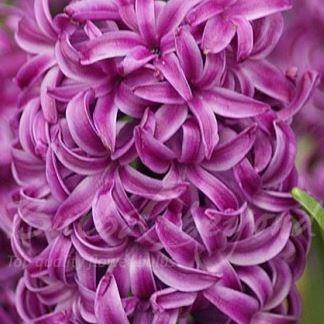
Hyacinthus orientalis 'Purple Sensation'
Hyacinth 'Purple Sensation'
Hyacinths will give great shows of colour and scent in Spring. They have glossy strap-shaped leaves, and the flowers spikes of bell-shaped flowers with recurved petals, They can be grown outdoors, or in containers indoors. If growing indoors, specially prepared bulbs can provide flowers in mid Winter. 'Purple Sensation' is a regal hyacinth, bearing very fragrant, deep-violet flowers.
Contributed by @vickster
-
Full sun to partial shade
-
Occasional watering
-
Frost Hardy: 23F (-5°C)
-
Free draining and fertile
Common name
Hyacinth 'Purple Sensation'
Latin name
Hyacinthus orientalis 'Purple Sensation'
type
Bulb
family
Asparagaceae
ph
6.5 - 7.5 Acid - Neutral
Plant & bloom calendar
-
Best time to plant
-
When the plant will bloom
full grown dimensions
 0.08 M
0.30 M
0.08 M
0.30 M
Hyacinthus orientalis 'Purple Sensation'
Hyacinths will give great shows of colour and scent in Spring. They have glossy strap-shaped leaves, and the flowers spikes of bell-shaped flowers with recurved petals, They can be grown outdoors, or in containers indoors. If growing indoors, specially prepared bulbs can provide flowers in mid Winter. 'Purple Sensation' is a regal hyacinth, bearing very fragrant, deep-violet flowers.
Flowering
From Early Spring TO Late Spring
Hyacinths are highly scented Spring flowering bulbs, but can flower in mid Winter if specially prepared bulbs are planted in containers indoors. Outdoor bulbs will normally flower in Spring
Planting
From Early Autumn TO Early Autumn
Plant hyacinth bulbs in fertile, free-draining soil, in a position where they will get plenty of sun. Wear gloves, as the bulbs can be an irritant. Plant the bulbs about 4" deep and at least 3" apart. If the soil is not free-draining, dig in organic matter to improve the drainage. If planting in containers, use a good compost, such as 2 parts John Innes No 2 mixed with 1 part grit or sand
Propagating by "Scooping"
From Late Summer TO Late Autumn
With scooping, all of the basal plate of a healthy, dormant bulb is scooped out using a sterilised, sharpened teaspoon or scalpel, leaving the outer rim intact. Place scooped bulbs, with the base uppermost, on a layer of moist, coarse sand in a dark, warm place, like an airing cupboard.Bulbs should be checked regularly for disease and the sand kept moist. Bulblets form on the exposed edge of the scales (i.e. in the scooped section) after three months. In late autumn plant the mother bulb (with bulblets attached) the right way up, outside in a free bed and cover with 5-7.5cm (2-3in) of soil. In early summer, after the leaves of the mother bulb have died down, carefully lift the new bulbs which will be the size of peas or small marbles (note: the old mother bulb will have rotted away). Line out the bulbs in beds, lifting and replanting each year until they are full size










